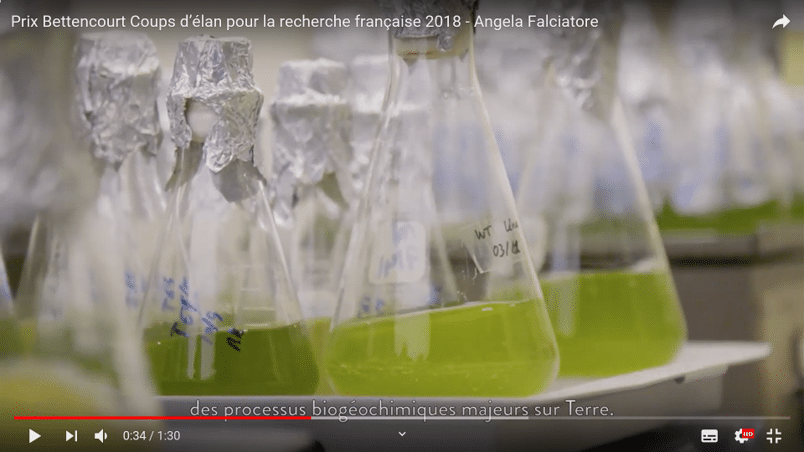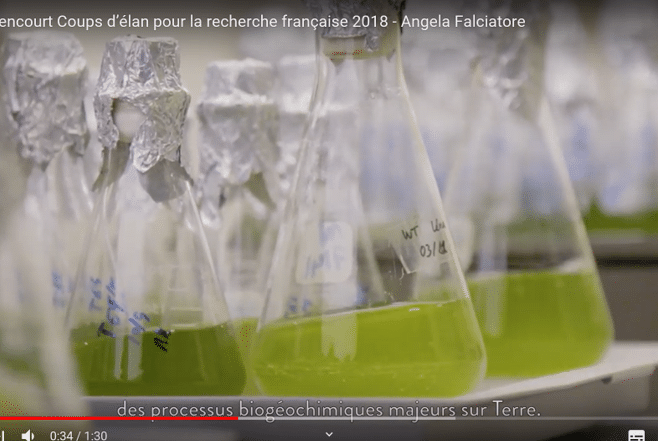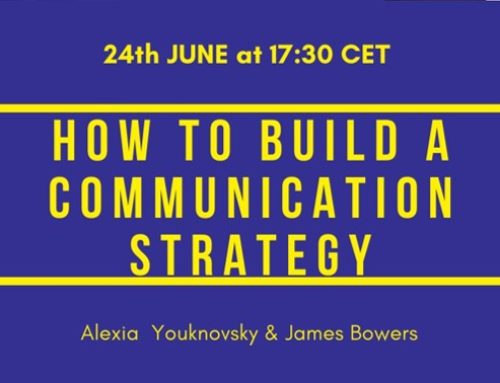Common myths
about making science videos
How much time do you spend watching videos? No doubt much more than you used to a few years ago. Video content is everywhere: on TV, at events, social media, the Internet and even our intranets at work. The science world is no exception. Science videos are useful tools not only for talking about research projects but also the people and institutes doing the work. If you want to increase the visibility of your project, then you may have already considered making some science videos of your own. Here are 5 common myths that we often come across that you should look out for.

Myth 1 : “We don’t have anything to show”
There is often so much to make a film about that its tough to know where to start! It is true that many research fields don’t have much “visual” examples of their work. We come across that in areas like data science, maths and quantum physics, for example. But there is always a way to find something to show. Some graphs may seem like boring everyday data to you, but for those who are seeing it for the first time, it can actually have an artistic edge. Perhaps that room where you stock a mountain of hard drives held together with a million wires might make nice backdrop for a science video. An old library with piles of antique books with papers scattered all over the place can provide an interesting place to film an interview.
Other than just visuals, there is also the topic to think about. Depending on your message there are different types of science video. Animations are ideal for explaining complex ideas, particularly those that cannot be shown in real-life. Interviews are great for spreading expert advice. Reports are fantastic to discuss a topic in greater detail. Social media “stories” are terrific for creating a connection with your community. At the very least, where there are people there are stories. You could introduce researchers from your lab, what they do, why they are so amazing. What are there skills? Why are they so passionate about their subject? There is so much to be said here.
Myth 2 : “Video content is expensive”
Producing science videos for your website, social media channels or event doesn’t have to be pricey. A better way of thinking about it is that your budget needs to be in line with the impact you expect to achieve. Any form of advertising is a sure-fire way to achieve a high viewership, so a big investment is definitely worth the pay-off. Whereas, clips for social media could be re-thought to adjust to your budget.
A low budget requires a bigger dose of creativity in how you spend it. You can be flexible in your scenario, too. Do you really need to interview the entire scientific board? Perhaps just one or two people would be sufficient. Can you use 2D motion design to explain your tech instead of 3D? Can you film everything in the same location? These are all things that you can hash out in advance. Keep your budget in mind when coming up with your ideas to help you build an idea that fits your means.
Myth 3 : “Our audience is everyone who may be interested”
Identifying your audience should be one of the first things you do in any type of communication. Science videos are no different. There is so much content out there that if you target “everyone” you will end up with “no one”. By its very nature, the internet allows users to choose exactly what content they want to engage with. You need to make people want to select yours out of all the possible options.
The more your video is viewed, liked and shared online, the more it will be seen by the right types of people and their networks. Your objective is to break into one or several of those internet communities. That means knowing who you want to target. To produce a science video that will appeal to your audience, you should be able to answer the following three questions:
• Who do I want to watch my video?
• Why do I want them to watch my video?
• What will make them want to watch my video?
Myth 4 : “We’ll just put them on our YouTube channel”
‘Views’ don’t just appear out of nowhere. Unless your lab or institute is one of the rare YouTube successes, you most likely don’t have a crowd of followers itching at their desks waiting for your next science video clip to come out. You need to put in a bit of work to get noticed. 2019 statistics show that YouTube viewers were watching a total of 5 billion videos per day. There is no denying that there is an audience out there. But at the same time, 500 hours of new content is uploaded per minute! The battle for people’s attention is tough.
For people to watch your content, you need to present it to them. That means your strategy needs to consider more than just making and uploading a video. You need to be fixing objectives about how to broadcast those clips too. Social media is an obvious choice (Twitter, LinkedIn, Facebook, Instagram), but your website is a necessity too. We know that search engines favour pages with video content and that web-users spend more time on those pages. Be creative about other ways of broadcasting the video. Think about adding it to your next newsletter, articles, e-mail signatures, press releases, intranet, events or external presentations. You need to give it a big push to get the motor running.
Myth 5 : “We can make them ourselves”
Be aware that there are times when it is suitable for you to make your own clips and others when it is not. Some hugely impactful science videos were made with nothing more than a smartphone and a sense of humour. You can really make waves on social media like LinkedIn and Instagram with a homemade vlog or Instastory. To gain this type of audience, you should regularly upload content to see the best results.
For anything else, ideally you need a team who knows their way around a camera if you want your video to make waves. Handing over production does not mean handing over complete creative control to someone else if you don’t want to. Either way, clearer your idea, the closer your final product with be to your overall expectations. You need to know in advance what the message is and how you want your film to look. Video content is much harder to change after your film has already been shot.
At Agent Majeur we produce animations, interviews, reports, event films and more. Over the last year we produced 70 videos on science topics. If you want to chat about your video project, you can contact us here : contact@agentmajeur.fr.
> Media
20/09/2019








